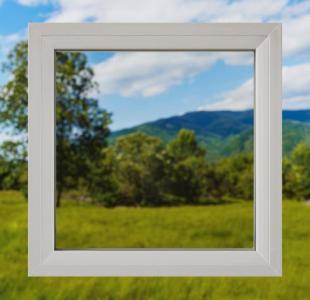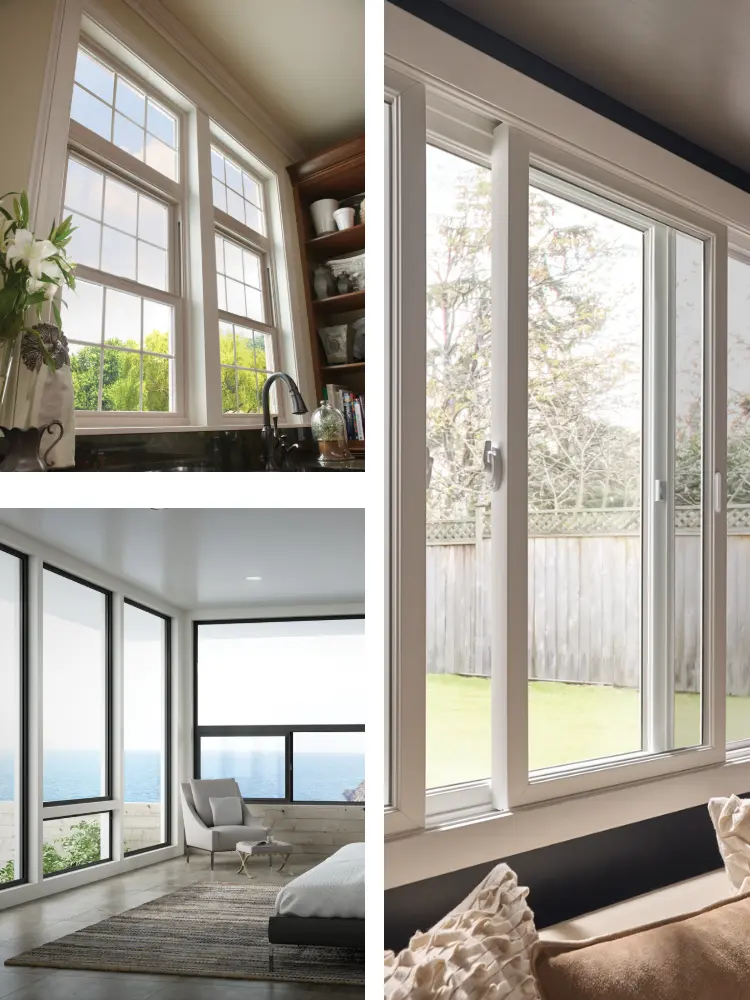

Sunlight streaming through your windows can make every room feel alive. However, that same light carries ultraviolet radiation that fades floors, weakens curtains, and disrupts the aesthetics you've carefully designed. Over time, it can even damage skin and push unwanted heat into your home. Low-emissivity (low-E) glass, ultraviolet light (UV) protection windows, and even specialized window film can change how light works in your space. They filter the harmful rays while letting in a softer, more controlled glow.
With the right choice, you protect your interior design while controlling glare and keeping indoor temperatures steady. This guide will show you how to select replacement windows that defend your home and your health from the California sun.
Why UV Protection Matters for San Diego Homes
San Diego's near-constant daylight is part of the region's charm. However, that same sunlight carries UV radiation and infrared heat that slowly erodes your home's comfort and value. Without proper protection, windows act like open doors for heat and damaging rays, affecting everything from energy use to personal health.
Fading and Material Breakdown
Ultraviolet rays alter the chemical bonds in dyes and pigments. Over time, this process drains color from furniture, hardwood, carpet, paint, and upholstery. Curtains begin to look dull, and once-rich finishes lose their depth. UV protection windows and films slow that process by limiting the radiation that reaches your floors and fabrics, helping them maintain their appearance far longer.
However, you cannot reverse the damage once fading begins without costly restoration. That's why installing UV blocking windows is far more practical than trying to repair what's already lost. With adequate UV protection, your floors and furnishings keep their original look for years instead of seasons.
Escalating Energy Use
Untreated glass allows solar energy and infrared heat to pour in, increasing indoor temperatures. Air conditioning units must work harder to counteract that heat, leading to higher utility bills and more wear on equipment. Low-E coatings or laminated glass with UV-blocking layers limit this heat transfer, allowing your home to stay cooler with less mechanical effort.
Health Concerns
UVA and UVB rays pass through standard glass and contribute to skin damage. Over time, this exposure can increase the risk to certain health conditions, including skin cancer. Dermatology professionals and the Skin Cancer Foundation recognize UV-blocking windows and films as effective preventive measures. These solutions also cut glare, reducing strain on your eyes during prolonged daylight exposure.
Comfort and Aesthetics
Harsh glare can make certain rooms uncomfortable during peak daylight hours. With UV protection built into your home windows, light still enters, but in a more balanced, less intrusive way. As a result, this creates a natural, bright space without the discomfort of uncontrolled solar gain, while protecting your interior design's overall aesthetics.
Key Features to Look for in UV Protection Replacement Windows
Sunlight can be beautiful, but it's also relentless. Without the right window technology, that constant exposure can damage your home's comfort, energy efficiency, and interior design. The features below show how modern UV protection windows stop that damage before it starts.
Low-E Glass Coatings

If your windows allow harsh daylight to pour in, they let UV and infrared heat slip through, accelerating fading and raising indoor temperatures. Low-E glass coatings stop this by using an ultra-thin metallic layer that reflects UV radiation before it reaches your floors, curtains, carpet, or upholstery. You can confirm a window has Low-E protection by checking for an National Fenestration Rating Council (NFRC) label or asking for its UV transmittance rating. The best Low-E coatings block up to 99% of UV rays, protecting your floors, curtains, carpet, and upholstery from fading while reducing heat transfer. That means cooler rooms in summer, less glare on your screens, and lower air conditioning costs.
Dual Pane Glass
A single sheet of glass offers almost no defense against UV penetration or heat transfer. Dual-pane glass solves this problem by sealing two panes with an insulating space in between, often filled with argon gas to improve thermal performance. This extra layer creates a barrier that slows heat gain and ultraviolet transmittance, keeping your interior design vibrant and your indoor climate more stable.
Laminated glass upgrades add even greater UV protection, stopping most radiation that causes fading and material breakdown. The result is a window that shields against sunlight damage while improving energy efficiency and comfort year-round.
Spectrally Selective Tints

Regular tinted glass often darkens the view and changes the appearance of your home. Spectrally selective tints take a different approach by targeting specific wavelengths in the solar spectrum. They filter out the UV and infrared energy that causes fading and heat buildup while allowing most visible light to pass through. That means your rooms stay bright without the damaging radiation that breaks down dyes in hardwood, carpet, and upholstery. The coatings are engineered at the molecular level, blocking heat-producing wavelengths without creating a reflective or mirrored look. In climates like San Diego, where glare and high UV exposure are daily concerns, these tints maintain outdoor views, reduce eye strain, and slow the wear on interior finishes.
Frame Materials
Even the best glass can underperform if the frame transfers heat or warps under constant sun exposure. Fiberglass frames expand and contract little in extreme temperatures, which keeps seals tight and prevents gaps that allow heat to leak in. Vinyl frames offer sound insulation when well-constructed, but can distort under prolonged ultraviolet exposure if not formulated for high-heat climates. Wood frames insulate well and add a classic aesthetic, but they need protective cladding or finishes to withstand direct sunlight and humidity changes. A properly matched frame works with your UV protection glass to reduce heat transfer, preserve efficiency, and extend the window's performance life.
Understanding Window Energy Performance Ratings
Energy performance ratings tell you how well a window controls heat, light, and air movement. The NFRC sets them, tests, and certifies products so you can compare them fairly. If you want UV protection windows that perform as promised, these numbers matter as much as the glass or coating you choose.
- U-Factor: The rate of heat transfer through the entire window. Lower numbers mean better insulation. Aim for 0.30 or lower in San Diego to limit unwanted heat movement.
- Solar Heat Gain Coefficient (SHGC): The fraction of solar radiation that enters as heat. Lower ratings mean less infrared and ultraviolet energy inside. Look for 0.25 or lower to control heat gain.
- Visible Transmittance (VT): The amount of visible daylight passing through. Higher ratings mean brighter interiors without necessarily increasing heat gain. A range of 0.50–0.70 is optimal for most homes.
- UV Transmittance: The percentage of ultraviolet light that passes through. Lower values protect skin and reduce floors, fabrics, and finishes. High-performance Low-E or laminated glass can block 95–99% of UV rays.
Window Frame Materials: What Works Best In Sunny Climates?

The glass might get most of the attention, but the frame holds your UV protection in place and determines whether that performance lasts. In a climate like San Diego, constant sunlight and the accompanying infrared heat can cause the wrong frame to warp or degrade over time. That damage leads to a steady loss of insulation and openings that let conditioned air escape, with seals breaking down well before the warranty ends. So which frame material is best for you and your home?
Fiberglass
Fiberglass frames handle sun exposure better than almost any other material. They expand and contract at nearly the same rate as the glass, keeping seals tight even during extreme temperature changes. In a high-UV environment, fiberglass resists warping, softening, or fading and won't become brittle over time. When paired with Low-E glass, it creates a thermal barrier that minimizes heat transfer and keeps ultraviolet rays from sneaking past the edges. While fiberglass costs more upfront, its stability and longevity make it a wise investment for homeowners who don't want to replace windows prematurely.
Vinyl (PVC)
Vinyl, or polyvinyl chloride (PVC), frames offer strong insulation at a lower price, and quality formulations are resistant to moisture and pollutants in coastal air. However, not all vinyl performs the same under relentless UV exposure. Cheaper blends can discolor, warp, or become chalky when the sun's radiation breaks down the polymers. Look for vinyl frames with UV inhibitors built into the material, like Milgard's unique formula, and verify the product underwent testing for high-solar climates. Done right, vinyl can keep heat out, reduce air leakage, and maintain its shape without frequent upkeep.
Aluminum
Strength and durability make aluminum frames long-lasting, but untreated aluminum transfers heat quickly. That transfer can raise indoor temperatures and increase reliance on air conditioning. Modern designs use thermal breaks, which are insulating barriers built into the frame to slow heat flow. When engineered effectively, these barriers allow aluminum to perform more like insulated materials while keeping its slim profile and structural stability. Always review the U-factor for the complete window assembly to ensure the frame maintains efficiency under intense sunlight and high temperatures.
Best Window Styles for UV and Heat Protection
The style of a window in your home directly impacts how well it blocks ultraviolet radiation and controls heat transfer. Some designs seal more tightly, while others allow better ventilation or larger glass surfaces for daylight without sacrificing protection. Choosing the right style means balancing performance, aesthetics, and how each opening will function in your space.
- Casement Windows: Hinged on one side and opening outward, casement windows create a tight seal when closed. This design minimizes heat gain and reduces UV penetration along the frame edges. When opened, they can direct breezes into the home, helping reduce reliance on air conditioning.
- Awning Windows: Hinged at the top, these windows open outward to allow airflow even during light rain. Their compact size and seal help limit UV exposure through the frame area, making them effective for spots where ventilation and protection are equally important.
- Picture Windows: Fixed and non-operable, picture windows have no moving parts to disrupt the seal. They are ideal for large views where maximum daylight is desired paired with high UV and infrared blocking performance from coated or laminated glass.
- Double-Hung Windows: Featuring two operable sashes that slide vertically, double-hung windows offer flexibility for ventilation. High-quality models with precise manufacturing maintain strong seals, reducing the amount of UV and heat entering the home compared to looser-fitting designs.
Why San Diego Homeowners Trust US Window & Door for UV Protection Windows
Proper sun protection for windows is a home improvement that defends interior design while lowering heat gain from sunlight. US Window & Door installs windows with advanced low-emissivity glass and UV protection, including custom-fit frames that filter ultraviolet radiation without blocking the quality of natural light. Request a free estimate today to see how the proper glass and professional installation can transform your home and protect what matters most.




.jpg)